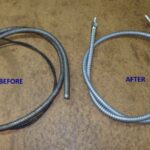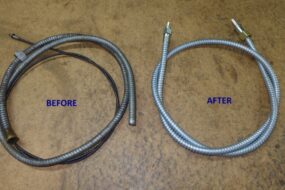Replacing a front windshield is an essential task that can enhance your vehicle’s safety and appearance. Whether it’s due to cracks, chips, or general wear and tear, knowing how to replace your windshield can save you time and money. Here’s a step-by-step guide to help you through the process.
When to Replace Your Windshield
Before diving into the replacement process, it’s important to know when it’s time for a new windshield. Common reasons include:
- Cracks or Chips: If the damage is extensive or located in the driver’s line of sight, replacement is usually necessary.
- Age and Wear: Over time, windshields can become cloudy or pitted, affecting visibility.
- Structural Integrity: A compromised windshield can weaken the vehicle’s structural integrity, especially in a rollover accident.
Tools and Materials Needed
To change your windshield, you’ll need the following tools and materials:
- Replacement windshield
- Windshield adhesive or urethane
- Windshield removal tool or knife
- Suction cups (for lifting the windshield)
- Safety gloves
- Clean rags or towels
- Glass cleaner
- Safety goggles
Step-by-Step Replacement Process
- Prepare Your Workspace
- Park your vehicle in a clean, dry area away from direct sunlight. Ensure you have all your tools within reach.
- Remove the Old Windshield
- Use a windshield removal tool or knife to carefully cut through the adhesive around the edges of the windshield. Start at a corner and work your way around.
- As you cut, use suction cups to gently lift the windshield from the frame. This will help avoid any damage to the vehicle’s paint or body.
- Clean the Frame
- Once the old windshield is removed, thoroughly clean the frame where the new windshield will sit. Use glass cleaner and a clean rag to remove any debris, old adhesive, or dirt. A clean surface ensures a proper seal for the new windshield.
- Apply Adhesive
- Apply a bead of windshield adhesive or urethane along the frame. Follow the manufacturer’s instructions for the correct application method. Make sure the adhesive is evenly distributed for a secure bond.
- Position the New Windshield
- Carefully position the new windshield over the frame. Use suction cups to help align and lower the glass into place. Make sure the windshield is centered and seated properly.
- Press and Secure
- Once the windshield is in place, gently press down to ensure it adheres to the adhesive. Some adhesives require you to hold the windshield in place for a few minutes. Refer to the adhesive’s instructions for specific guidelines.
- Clean Up
- Wipe away any excess adhesive with a clean rag. Clean the new windshield with glass cleaner to remove fingerprints or smudges.
- Allow to Cure
- Let the adhesive cure according to the manufacturer’s instructions. This is crucial for ensuring a strong bond and maintaining the integrity of the installation.
Final Tips
- Safety First: Always wear safety gloves and goggles to protect yourself during the process.
- Consider Professional Help: If you’re unsure about tackling the replacement yourself, it’s wise to consult a professional. Incorrect installation can lead to leaks or safety issues.
- Check Local Regulations: Ensure that your replacement windshield complies with local laws and regulations regarding tint and safety features.
Final Thoughts
Changing a front windshield may seem daunting, but with the right tools and guidance, it can be a manageable DIY project. Maintaining a clear and undamaged windshield is vital for safe driving, so don’t hesitate to replace it when necessary. Whether you choose to do it yourself or seek professional assistance, ensuring your vehicle’s safety and functionality is always a top priority!







